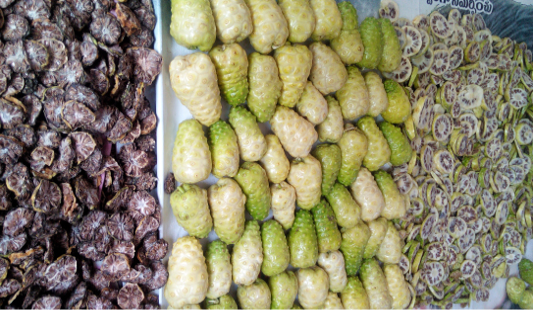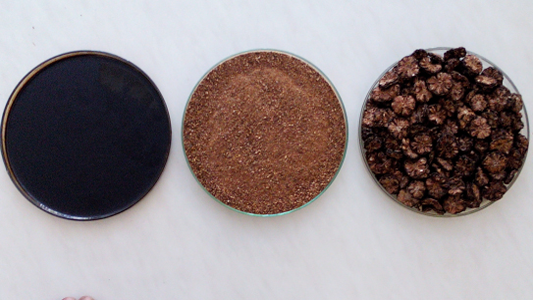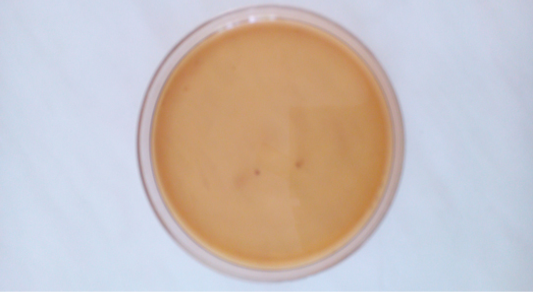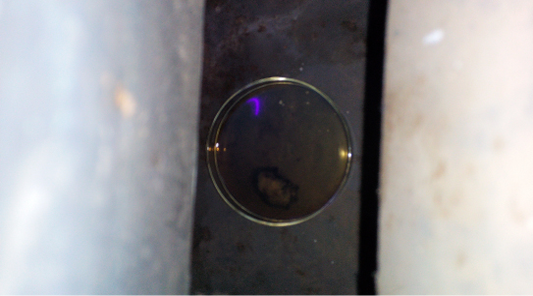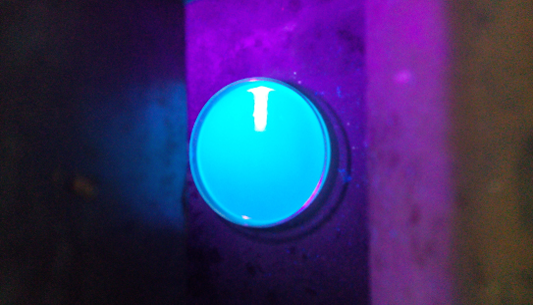Advances in Animal and Veterinary Sciences
Research Article
Physicochemical and Phytochemical Evaluations on Noni (Morinda Citrifolia Linn.) Fruit Powder and Extracts
Gajanan Dhondbarao Ranvir1, Sudhir Raghuttamrao Rajurkar1, Bhagirath Vithalrao Ballurkar1, Govind Rangnathrao Gangane1
1Department of Veterinary Pharmacology & Toxicology, College of Veterinary & Animal Sciences (MAFSU), Parbhani-431 402 (India).
Abstract | Morinda citrifolia (family Rubiaceae) ispopular western medicinal plant known by “Noni” or “Indian Mulberry” in India. All parts of this plant are used as valuable medicine for human, also used as wholesome foodforanimals during food scarcity. Its fruits have been extensively screened for different medicinal properties and pharmacological activities, however lacking the data on relative extractability and fluorescence characteristic of fruit powder (coarser and fine). Present study was conducted to evaluate physicochemical properties of fruit, fruit powder and extracts and to evaluate phytochemicals constituents of fruit extracts (qualitative analysis) by conventional techniques and methods. Results showed that the moisture content in the wet fruit was 80.46 % on dry weight basis. The powder (coarser and fine)was pale brown, emits butyric or foul smell, slight bitter in taste, pungent aromatic in odor and light in weight. There was no significant difference (P<0.05) in solvent extractability of both powder in aqueous and hydroethanolic solvents. The fine powder showed clogging ability and less extractability in both the solvents than coarser powder. The aqueous and ethanol extractsrevealed numerous chemical compounds. In conclusion, distinct physicochemical properties and chemical compounds in both aqueous and ethanol fruit extracts of noni fruit could be validated by simple tests.
Keywords | Morinda citrifolia, Fruit powders, Extractability, Physicochemical, Phytochemicals.
Editor | Kuldeep Dhama, Indian Veterinary Research Institute, Uttar Pradesh, India.
Received | January 26, 2017; Accepted | March 04, 2017; Published | Aptil 07, 2017
*Correspondence | Gajanan Dhondbarao Ranvir, Department of Veterinary Pharmacology & Toxicology, College of Veterinary & Animal Sciences (MAFSU), Parbhani-431 402 (India); Email: [email protected]
Citation | Ranvir GD, Rajurkar SR, Ballurkar BV, Gangane GR (2017). Physicochemical and phytochemical evaluations on noni (Morinda citrifolia linn.) Fruit powder and extracts. Adv. Anim. Vet. Sci. 5(4): 160-166.
DOI | http://dx.doi.org/10.14737/journal.aavs/2017/5.4.160.166
ISSN (Online) | 2307-8316; ISSN (Print) | 2309-3331
Copyright © 2017 Ranvir et al. This is an open access article distributed under the Creative Commons Attribution License, which permits unrestricted use, distribution, and reproduction in any medium, provided the original work is properly cited.
INTRODUCTION
Exploring plants for wants of medicine is in practice since the antiquity. Due to fear of toxicity, side effects and adverse reaction of modern drugs, herbal medicines are preferred and used as alternative medicine to modern drugs in therapies worldwide. Plants are reservoir for many active compounds and good source of drug. World Health Organization recommended evaluation of traditional medicines to expedite their use according to beneficial effects on various disorders. Plants are excellent candidates for oral therapy (Shokeen et al., 2008) also useful in industrial, medicinal and allopathic applications (Sastry and Kavatheker, 1990).
Preliminary identification of plant constituents is first step towards developing new drug. Several synthetic drugs (chemical entities) ensure from traditional medicine being used as food supplements and or pharmaceutical intermediates (Hammer et al., 1999). Using modern technologies more than 80,000 secondary metabolites have identified as bioactive molecules were from higher plants. They showed unique profiles for secondary metabolites. High throughput screening procedure is useful for identifying biologically active principles, simple screening via bioassays guided technique valuable for separation and isolation of bioactive principles irrespective of drug category to which the drug belongs and the random screening of the natural products are allowed structural diversity of family related molecules.
Morinda citrifolia (family: Rubiaceae) is widely used plant in traditional medicine for various health benefits in human and also used as wholesome food for animals. Noni fruit used as valuable dietary adjuvant, medicine or food, different medicinal properties and therapeutic uses of fruit are reported in human (Rudolph, 2007; Anonymous, 1987; Anugweje, 2015). The physicochemical properties in relation to phytochemical compounds found in Noni fruit reported in very meager studies. Therefore, present study was conducted to evaluate noni fruit, fruit powders and extracts for physicochemical properties and recognize chemical compounds in fruit extracts (qualitatively) to provide additional database.
MATERIALS AND METHODS
Collection and Authentication of Noni Fruit
Morinda citrifolia elite fruits were handpicked was collected in the months of May-June from plants maintain at Vasantrao Naik Marathwada Agricultural University, Parbhani, Maharashtra (India). These fruits authenticated from the expert Botanist. The voucher specimen preserved for future reference at the department of Veterinary Pharmacology and Toxicology, College of Veterinary & Animal Sciences, Parbhani (Maharashtra).
Processing of Plant Materials
All fruits were cleaned and rinse with tap water, while rinsing the fruits found to float floats on water surface. Cleaned fruits chopped into thin slices of 2-5 mm in diameter (Figure 1) were air dried at room temperature (Figure 2). Dried fruits pulverized with help of commercial flouring mill and using electrical grinder. Thus, fruit powder obtain was sieved through different size mesh to obtain coarser and fine fruit powders. About 12.816 kg fruits in lots of 5 kg weighed at each time, individual fruit weighs also taken to determine moisture content in fruit. Taking difference in weight of individual fruit before and after drying, the moisture content was determined by subtracting the final weight of dried fruit from its initial weight (DM basis).
Preparation of Extracts
The fruit powder (coarser and fine) was subjected to aqueous and hydroethanolic extraction. It was dissolved in distilled in pure water and in hydroethanolic solvent (50% v/v) respectively. The extracts were prepared by maceration technique (Tiwari et al., 2011) using material to solvent ratio 1:20 and 1:10 in water and ethanol respectively. Solvent mixtures macerate for 48 hr sat room temperature.
To obtain hydroethanolic extract, 200 gm of each fruit powder (coarser and fine) was mixed in 2.0 L ethanolic solvent (1:10), meanwhile intermittently shaken mixture manually and with help of mechanical shaker. After complete maceration, macerates was strain through muslin cloth then filtered through What man No. 42 filter papers. The filtrates transfer to Petri plates (Figure 3) and air-dried at room temperature, then in hot air oven (43 0 C). The weights of extract determine taking difference in weight of Petri plate before and after drying extractive solvent (macerates). The final weight of extracts obtained by subtracting initial weight of Petri plates (Bank) from its final weight (with extract) at each trail and calculated extract yield (extractability). While handling the macerates and extracts precaution was taken for possibilities of contamination and loss of any extract during processing.
Thus, ethanol extract obtained (Plate 2) was stored in spare Petri plates and placed in airtight desiccators and kept in refrigerator. Similarly, the aqueous extracts were obtained using 50 gm powder material at each trial was macerate in 200 ml distilled water. Total 2.5 kg of fruit powder were used in ethanol extraction and 600 gm powder for aqueous extraction. The extraction yield, color, odor, taste, consistency, fluorescence, pH, optical density was determine for all extractsaccording to techniques suggested by (Ameh et al., 2010).
Fluorescence Characterization
The fluorescence characteristic of fruit powder and extracts were determined with the help of specially designed UV box (visualizer chamber) was provided with the mercury vapor lamp. Test samples (extract) were prepared by dissolving 100 mg extract in 10 ml distilled water (10 mg/ml).Test samples of 5 ml (10 mg/ml) each was loaded in each Petri plates (Figure 4a) were expose to UV light diffraction for 5 minutes without addition of any chemicals or reagent. These plates were visualized and observe under UV light for color pattern of light diffraction for each fruit materials and fluorescence characteristics.
Phytochemical Analysis
To know chemical compounds in the aqueous and hydroalcoholic extracts of Morinda citrifolia different phytochemical tests (qualitative) were perform using standard tests protocol (Harbourn, 1976,1998; Kokate CK 1988; Kokate et al., 2005; Sadashivan and Manickam, 2005; Wallis TE, 1990; Trease and Evans, 2001). Test samples prepare by dissolving 100 mg of extract in 10 ml distilled water (10mg/ml) was used for various tests.
RESULTS AND DISCUSSIONS
Physicochemical Characterization
The moisture content in wet fruit of noni observed was 80.48% on DM basis (data not cited) was in approximation with the report of (Chunhieng, 2003) who observed 90% water in noni fruit. According to (Nayak and Mengi, 2010), the moisture content in noni fruit powder after drying (PLOD basis) was 5.9 %, difference observe in the moisture content was might be due to kind of material used in analysis of water content.
The physicochemical properties of M. citrifolia fruit powder present in Table 1. The flotation property of wet fruit of noni report first time in our study, which might be due to presence of air sacs in seeds of noni fruit (Mohammed, 2006), as a consequence noni fruit was observe light in weight.
The fruit powder brownish or straw in color, bitter in taste, pungent, aromatic in odor, swell in water, when moist was sticky, highly slimy and emulsifiable. The fine powder showed clogging ability when mixed in water that might have numerically affected its extractability than coarser powder. Bitter taste and rancid odor of fruit observed in our study are in accordance with several reports (Rita Elkins, 1998; Chan-Blanco et al., 2006; Peter, 2007; Brubo, 2009; Goodyear-Smith, 2010).
Solvent extract ability of Noni fruit powder (coarser and fine) both in water and ethanol solvents illustrate in Table 2. The percent extract ability of coarser and fine powder of noni fruit in aqueous and hydro ethanolic solvents were 25.26 and 24.08 in water and in ethanolic solvent 27.93 and 24.55respectively (Figure 2). Solvent extractability (yield) observed in our study in respect to coarser and fine powder was higher than reported in earlier study by (Nayak and Mengi, 2010) who showed 13.4 and 19.0 % w/v extractability of noni fruit powder in aqueous and organic solvents respectively. The difference in extraction yield might be due to method of extraction, type of materials and or solvents used in extraction. (Mandukhail et al., 2010) reported 20 % extractability of noni fruit powder in ethanolic solvent (70 % v/v) processed in vacuum air drier for 3 hours, similar extractability of noni fruit powder in 95% ethanolic solvent reported by (Haque and Rao, 2013). These reports are in close approximation with our observations. (Sharma and Sharma, 2011) showed greater solvent extractability of noni fruit in aqueous medium than
Table 1: Solvent, Materials, Strength Solution and Physicochemical properties M.citrifolia fruit powder and extracts
|
Properties |
Fruit powder |
Aqueous Extract |
Hydro Ethanolic Extract |
|
Solvent (v/v) |
--- |
100 % (Pure Water |
50 % (1:1 v/v) |
|
Material: Solvent Ratio |
--- |
1:20 |
1:10 |
|
Strength of Extractive Solvent (w/v) |
--- |
10 mg/ml |
10 mg/ml |
|
Fluorescence (ordinary light) |
Pale Brown or whitish |
Pale Yellowish-Brown |
Pale Yellowish-Brown |
|
Fluorescence (UV Light) |
Whitish-Blue |
Navy Blue |
Navy Blue |
|
pH of extractive solvent (at temperature) |
--- |
2.228 (27.5 0C) |
4.481 (27.5 0C) |
|
OD values (at 520 nm) of extractive solvent |
--- |
0.61 |
1.59 |
|
Color (Ordinary) |
Straw color or Pale Brown |
Pale brown or whitish |
Dark Brown- Black |
|
Odor |
Pungent or Butyric acid |
Musky, Strong Aromatic |
Musky, Strong Aromatic |
|
Taste |
Pungent, slight Bitter |
Bitter |
Bitter |
|
Texture |
Solid |
Solid Powdery |
Semisolid |
|
Consistency |
Dry or Sticky on moist |
Dry or Sticky on moist |
Sticky |
|
Special feature |
Light in weight, slimy, swells in water, |
Soluble in water, foamy, slimy, solid powder |
Freely soluble in water, glossy in appearance, liquefies at 43.5 0C and solidity after cooling. |
in alcoholic solvent, which contradicted with our findings of significantly higher (P<0.05) extractability (yield) of coarser powder in ethanol than in aqueous solvent. No significant difference in extractability of fine powder (yield) was observed in both solvents. Physicochemical properties of extracts of M. citrifoliafruit illustrate in Table 1. Both the aqueous and ethanolic extracts were semisolid, slight bitter in taste, had characteristic butyric acid smell. The absorbance (OD of water and ethanolic extractive solvents were 1.59 and 0.61 at temperature 27.2 and 27.5 0C respectively,signifies the presence of pigments and certain chemical compounds in respective solvent extracts. Accordance to (Nayak et al., 2011) aqueous and hydro alcoholic fruit extracts of noni were semisolid in consistency and dark brown in colour and reported absorbance (OD) 1.25 against noni fruit juice, this report is in concurrence with our observations. The pH values of both the aqueous and hydro ethanolic extracts observed in our study were 4.481 and 2.228 respectively, which indicates acidic nature of fruit extracts was probably due to presence of citric acid (Nayak and Mengi, 2010).
In our study, Navy blue voloration (Figure 4b) against normal pale brown colour (ordinary light) observed in both extracts after expose to UV light (at 520 nm wavelengths). (Nayak and Mengi, 2010) observed blue, green, red and brown voloration in hydroalcoholic extract of noni fruit (at 254 nm wavelengths) after spraying the plate with aniline and sulfuric acid reagent and confirm anthraquinones, alkaloids and polysaccharides in extract. In similar study, blue fluorescence reported at 366 nm after spray ng plate with 10% ethanolic potassium hydroxide was due to presence of coumarines. The color diffraction to navy blue observed in our study was without adding any chemical or reagent in the test extract that might be due to presence of certain chemical compounds in both the extracts. These reports are in accordance with our observations. According to earlier studies many substances as such or in some chemical solutions when exposed to different wavelengths was emitted light (Fluorescence) or colors which fall on them. These chemicals illuminator emit lights and ceased illumination when exciting light is cut-off. Illumination property shown by chemicals was due to short wavelength light which is very active in producing fluorescence than strong UV light
Table 2: Solvent extractability of fruit powder (course and fine) of Morinda citrifolia (Noni) in water and hydroethanolic solvents
|
Extractive Solvent |
Fruit Powder (gm) |
Ratio (w/v) |
Mean ± SE |
|||
|
Extract Yield (gm) |
%Extractability |
|||||
|
Fine powder |
Course powder |
Fine powder |
Course powder |
|||
|
Distilled water |
50.00 |
1:20 |
12.04±0.59 |
12.63±0.26 |
24.08±1.18 |
25.26±0.52 |
|
Hydroethanolic (50% v/v) |
200.00 |
1:1 |
49.10±1.50 |
55.865*±1.78 |
24.55±0.75 |
27.93*±0.89 |
(n=6) (*P<0.05)
(day light). Strong UV lights also produce fluorescence in many substances are not visible in day times, as such fluorescence light always have greater wavelengths than exciting light. In our study, observe navy blue voloration in both extracts was concomitant to the condition (Trease and Evans, 2001) was be due to presence of certain chemical compounds qualitatively confirmed in both these extracts (Table 3).
Phytochemical Analysis
The isolation of chemical compounds from crude plant products using simple processes were determined the therapeutic potential of many substances, where plants are biosynthetic laboratory for many active chemical compounds. The chemical compounds like alkaloids, flavonoids, glucosides etc pharmacological active compounds. The specific pharmacological activity of crude plant materials or their extractive solvents was due to desired principles embraces screening crude plant materials for chemical entities (active principles) responsible for therapeutic effects.
Phytochemical analysis (qualitative) of aqueous and ethanol extracts of M.citrifolia fruit present in Table 3. Results showedpresence of alkaloids, carbohydrates, flavonoids, glycosides, phenols, proteins, amino acids, saponnins, steroids, tannins, antraquinone, terpenoids, diterpens and triterpenesin the hydroethanolic fruit extract. All these constituents were present in aqueous extract except antraquinone. The presence of wide range of bioactive compounds in aqueous and alcoholic extracts are accordance with earlier studies (Assi et al., 2015; CIAR, 2014; Bussmann et al., 2012; Wang and Su, 2001; Sharma and Arya, 2011; Sharma and Sharma, 2011; Jain et al., 2012; Krishnaiah et al., 2012; Sasikumar et al., 2012; Rao et al., 2014; Sunder et al., 2016; Nayak and Mengi, 2010) showed presence of broad range of chemical compounds in hydro alcoholic fruit extract of Noni. Presence of saponins, triterpenes, steroids, flavonoids and cardiac glycosides in aqueous extract of noni fruit juice reported by (Nayak et al., 2011; Sangeetha and Preethi, 2014) showed proteins, carbohydrates, alkaloids, saponins, flavonoids and tannins in water, methanol, and ethanol extracts. (Anugweje, 2015) mentioned reducing sugar, phenols, tannins, flavonoids, saponins, glycosides, steroids, terpenoids, alkaloids and acidic compounds and the absence of anthraquinone, phylobatannins and resin in juice of M. citrifolia fruit.
The presence of cardiac glycosides, terpenoids, anthraquinones observed in hydroalcohloic extract in our study was accordance with report of (Anugweje, 2015; Deshmukh et al., 2011) showed anthraquionone, flavonoids and phenolic compounds using TLC analysis in suspension culture of fruit extract of Noni. In our study presence of polysaccharides, glycosides, amino acids, coumarine glycosides,
Table 3: Phytochemical analysis of fruit extracts of Morinda citrifolia Linn
|
Constituents |
Test Applied |
Results* |
|
|
Ethanol Extract |
Aqueous Extract |
||
|
Alkaloids |
Dragendroffs Test |
++++ |
++ |
|
Hagers Test |
++++ |
+++ |
|
|
Iodine Test |
---- |
-- |
|
|
Mayers Test |
++++ |
++ |
|
|
Wagners Test |
++++ |
++ |
|
|
Antraquinones |
Borntrager’s Test |
+++ |
--- |
|
Carbohydrate |
Benedicts |
++++ |
+ |
|
Fehlings |
++++ |
+ |
|
|
Molisch |
++++ |
++ |
|
|
Coumarine |
Coumarine Test |
++++ |
+ |
|
Emodine |
Emodine Test |
++++ |
++ |
|
Flavonoids |
Alakline reagent /NaOH |
+++ |
+++ |
|
lead acetate |
+++ |
+++ |
|
|
NH4 test |
++++ |
++ |
|
|
Glycosides |
Borntragers |
++++ |
+ |
|
Con H2SO4 |
++++ |
++ |
|
|
Glycoside |
++++ |
++ |
|
|
Keller-Killani |
++++ |
++++ |
|
|
Mollish |
++++ |
++++ |
|
|
Phenols |
Ellagic acid |
++++ |
++ |
|
Ferric chloride |
++++ |
++ |
|
|
Phenol |
++++ |
+++ |
|
|
Protein / AA |
Biuret |
++++ |
++ |
|
Ninhydrine |
++++ |
++ |
|
|
xanthoprotein |
++ |
++ |
|
|
Saponin |
Foam |
++++ |
++++ |
|
Froth |
++++ |
++++ |
|
|
Steroids |
Liberman-Burchardss |
++++ |
+++ |
|
Salkowski,s |
++++ |
+++ |
|
|
Quinone |
Test for Quinines |
++++ |
++ |
|
Tannins |
Salkowski |
++++ |
++++ |
|
Ferric Chloride |
+++ |
++ |
|
|
lead acetate |
++++ |
++ |
|
|
Terpenoids |
Sulfuric and acetic acid test |
++++ |
++ |
|
Diterpenoids |
Cu-acetate test |
++++ |
++++ |
|
Tritepenoids |
Liberman-Burchardss |
++++ |
+++ |
* Intensity of color or precipitation or ring formation
(-) = Negative, (++++) = Intense, (+++) = Good, (++) = Moderate, (+) = Poor,
tannins, phenolic compounds and alkaloids in aqueous extract are similar to these reports and absence of anthraquinones in this extract contradicted. The absence of anthraquinones in aqueous extract might be due to poor solubility of antharquinonesin water. The removal of seeds during production process of fruit juice showed absence of antharquinones (Assi et al., 2015), where the seeds contain significant amount of anthraquinone (Bussmann et al., 2012). Palanisamy et al. (2012) showed the bipolar nature of alcoholic solvents able to dissolve several phyto constituents than the aqueous solvent, the aqueous solvent only dissolve low molecular weight polar compounds, some constituents were not dissolve and found absent in the aqueous extract. Dispersion of biologically active compounds in the solution are largely depends on types of solvent used in extraction (Tiwari et al., 2011).
CONCLUSION
In conclusion, qualitative physicochemical traits of Noni fruit especially the fluorescence characteristic, floatation ability, weightlessness, acidic nature could useful traits in assessing the adulterations and purity of noni fruit products by simple tests, where the physicochemical properties was routinely procedure followed in quality control of the products. Physical nature (fineness) of fruit powder makes differences in extraction yield of Noni fruit powder. Different chemical compounds found in the noni fruit extracts could be valuable in exploring broad range of pure chemical compounds from the noni fruit aqueous and ethanol extracts, warrants for critical isolation, identification and the characterization of biologically active compounds in pure form that could be more potent in improving quality of life and health benefits.
ACKNOWLEDGEMENT
Author is sincerely thankful to the Associate Dean, COVAS, Parbhani for provided necessary facilities to conduct this experiment and to the Project Director, Noni Research Farm, College of Food Technology, VNMAU fortheir unconditional helps and supportsto conduct this study.
Conflict of Interest
No conflict of interest by authors.
Authors COntribution
It is original academic research work done as a part of PhD research. It is carried out during formulation of Silver nanoparticles coated with fruit extract of M. citrifolia. (Plant extract as organic coating materials with SNPs).
REFERENCES





